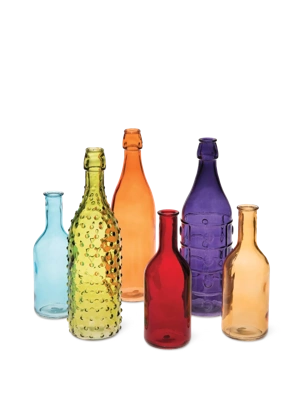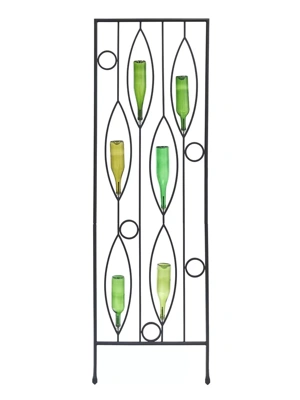Invasive Plants: Buy Now, Pay Later
 The brilliant red fall color of burning bush makes it a popular landscape plant.
The brilliant red fall color of burning bush makes it a popular landscape plant.Many gardeners are surprised to learn that burning bush has been reported as invasive in at least 16 states. Widely planted in home landscapes and commercial developments, the shrub has escaped cultivation and has invaded woodlands, where it grows into dense thickets that crowd out native species. So a recent announcement by University of Connecticut researchers that they've developed a seedless variety of the plant is welcome news.
 Scientists are using genetic fingerprinting to determine whether ornamental cultivars of Japanese barberry, like 'Rose Glow', contribute to the species' invasiveness.
Scientists are using genetic fingerprinting to determine whether ornamental cultivars of Japanese barberry, like 'Rose Glow', contribute to the species' invasiveness.Burning bush, also called "winged euonymus" for the corky ridges on its stems, is widely planted not only for its crimson fall foliage, but also because the plant tolerates poor soils and urban environments and has relatively few pest problems. This adaptability, along with its prodigious seed production, is also what allows the plant to overrun a variety of native habitats.
Researchers continue to work on developing sterile varieties of other popular landscape shrubs, including Japanese barberry (Berberis thunbergii) and butterfly bush (Buddleia), both of which pose similar invasive threats. Combined sales of these shrubs are in the tens of millions of dollars each year, so the availability of non-invasive varieties will be a win-win-win situation for environmentalists, the horticulture industry and gardeners.
Our Policy on Invasives
In an effort to slow the spread of invasive plants in our region, Gardener's Supply does not sell plants on the invasive "watch list" at its garden centers. The list includes plants that are not on the quarantine list (making them illegal to sell or purchase) but that have invasive potential, including burning bush and Japanese barberry.
These are popular plants that many customers expect to find at their local nursery, so the decision to discontinue selling them was not taken lightly. "We felt we could not continue to sell these plants and live up to our mission of improving the world through gardening," says Zoë Wainer, our green goods buyer.
In many parts of the country, fall is an ideal time to plant trees, shrubs and hardy perennials. As you browse for new plants, take care to avoid plants known or suspected of being invasive in your region. In addition, be sure to review your state's list of invasive species.
Defining Invasive, Aggressive, Native and Exotic
The term invasive is used to describe plants that spread aggressively outside their normal range. The plants multiply quickly because the new environment lacks the insects, diseases, foraging animals and competition from other plants that keep them in check in their native habitat. As they spread, invasive plants crowd out native plant communities and this, in turn, affects the rest of the ecosystem.
Many familiar plants are naturally aggressive but not necessarily invasive. Mint, for example, will take over a garden if allowed to flourish, but it won't invade and overrun an ecosystem.
The word native describes plants that are within their natural range of distribution, without direct or indirect human intervention. (In North America a plant is usually deemed native if it was present before Europeans arrived.) Native plants evolved and adapted alongside the native insects, fungi, wildlife, and other plants, resulting in a complex web where the organisms coexist and depend upon one another.
Exotic plants are those that have been introduced into an existing ecosystem, either on purpose or inadvertently.
Just because a plant is native doesn't mean it won't cause headaches in the landscape. Bee balm (Monarda didyma) and evening primrose (Oenothera) are natives that will spread quickly and overtake most plants in their path. On the other hand, many beloved exotics, such as peonies, bearded irises and apple trees, are well-behaved in the garden.
How Invasive Exotics Got Here
Some problem plants were likely brought here inadvertently, but many were introduced as ornamentals. These plants have the very qualities we look for in our garden plants, including adaptability, ease of propagation, and rapid growth.
 One way to make use of kudzu is to turn it into jelly.
One way to make use of kudzu is to turn it into jelly.The poster child for invasive plants, kudzu — aka "the vine that ate the South" — was brought here from Japan in 1876 to decorate the Japanese Pavilion at the U.S. Centennial Exposition in Pennsylvania. The fast-growing vine was widely planted to prevent soil erosion and as a high-protein livestock forage crop. Kudzu escaped cultivation and today smothers millions of acres of land in the southeast, engulfing trees, buildings and anything else in its path.
Most Southerners are familiar with kudzu's invasiveness and wouldn't knowingly plant it, even if they could find it for sale. But other potentially invasive plants are readily available. English ivy (Hedera helix), bugleweed (Ajuga reptans), and periwinkle (Vinca minor) are all non-native plants that were introduced to the U.S. as ornamentals. In regions across the country they've escaped into woodlands and fields where they form dense evergreen mats that crowd out native vegetation.
Geography Matters
A plant that aggressively spreads and becomes invasive in one region may be a perfectly well-behaved garden plant in another. For example, I'd be hard-pressed to keep pampas grass (Cortaderia selloana) alive in my climate, yet the plant is a noxious weed in California. So it's important to get to know plants considered invasive in your region. Avoid planting them, and consider removing them from your landscape — or at least try to limit their spread by removing flowers before they go to seed.
What's Invasive in my State?
For state-by-state lists of invasive plants, visit the USDA's Introduced, Invasive and Noxious Plants page.
Common Invasives
 Oriental bittersweet.
Oriental bittersweet.The following landscape plants are considered invasive in many parts of the country. If they're invasive in your region, look for alternatives.
Ground covers
- bugleweed (Ajuga reptans)
- crown vetch (Coronilla varia)
- English ivy (Helix hedera)
- periwinkle (Vinca minor)
Shrubs
- Japanese barberry (Berberis thunbergii)
- Russian olive (Eleagnus angustifolium)
- autumn olive (Elaeagnus umbellata)
- burning bush (Euonymus alata)
- privet (Ligustrum)
- bush honeysuckle (Lonicera), including Bell's, Amur, Morrow's, and Tatarian honeysuckle
- multiflora rose (Rosa multiflora), and roses grafted onto multiflora rootstock
Trees
- Norway maple (Acer platanoides)
- tree of heaven (Ailanthus altissima)
- mimosa (Albizia julibrissin)
- empress or princess tree (Paulownia tomentosa)
Perennials
- non-native bamboo goutweed (aka snow-on-the-mountain, Aegopodium podagraria)
- pampas grass (Cortaderia selloana and C. jubata)
- cogongrass (Imperata cylindrica)
- purple loosestrife (Lythrum salicaria)
- Chinese silvergrass (Miscanthus sinensis)
Vines
- Porcelain berry (Ampelopsis brevipedunculata)
- Oriental bittersweet (Celastrus orbiculatus)
- English ivy (Hedera helix)
- Japanese honeysuckle (Lonicera japonica)
- Chinese and Japanese wisteria (Wisteria sinensis and W. floribunda)
Learn More
Last updated: 03/11/2024
Print this Article:
Related items
Get the Dirt
Stay up to date on new articles and advice. Please fill out the information below.










